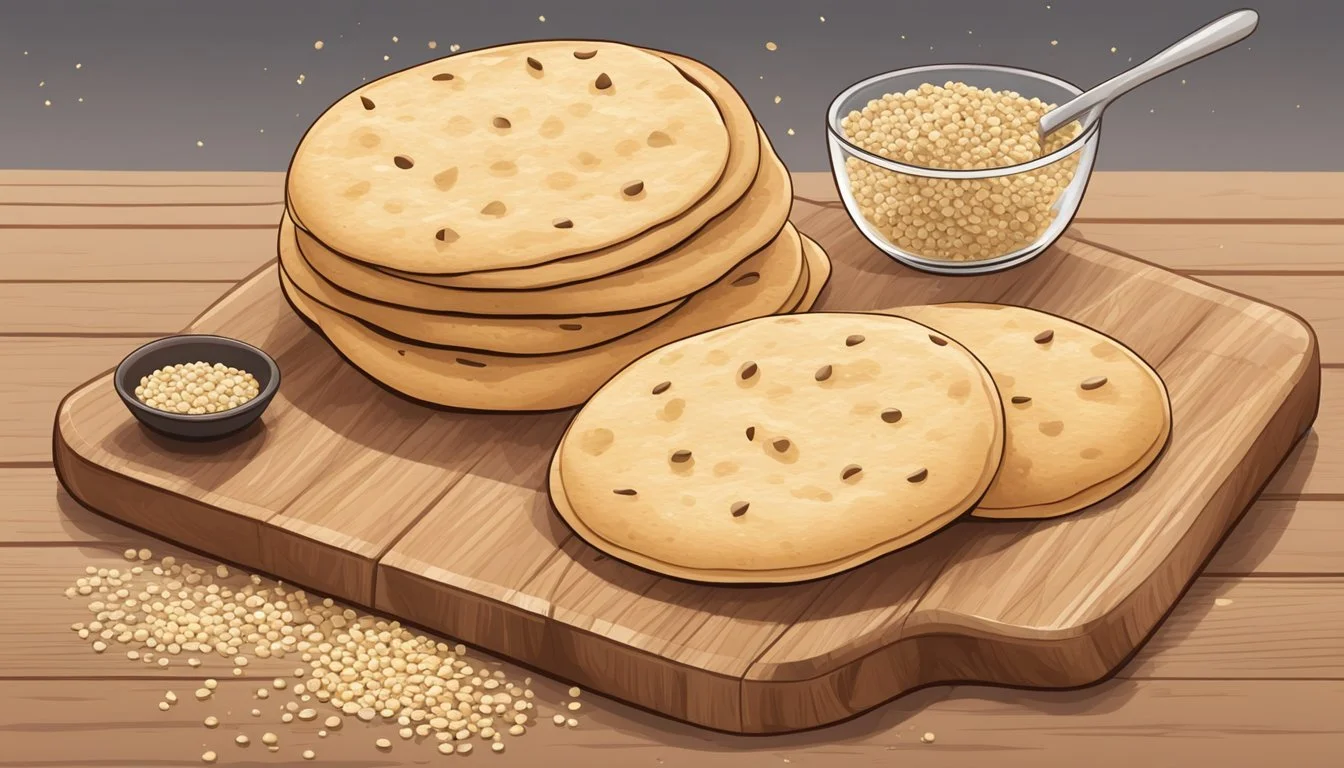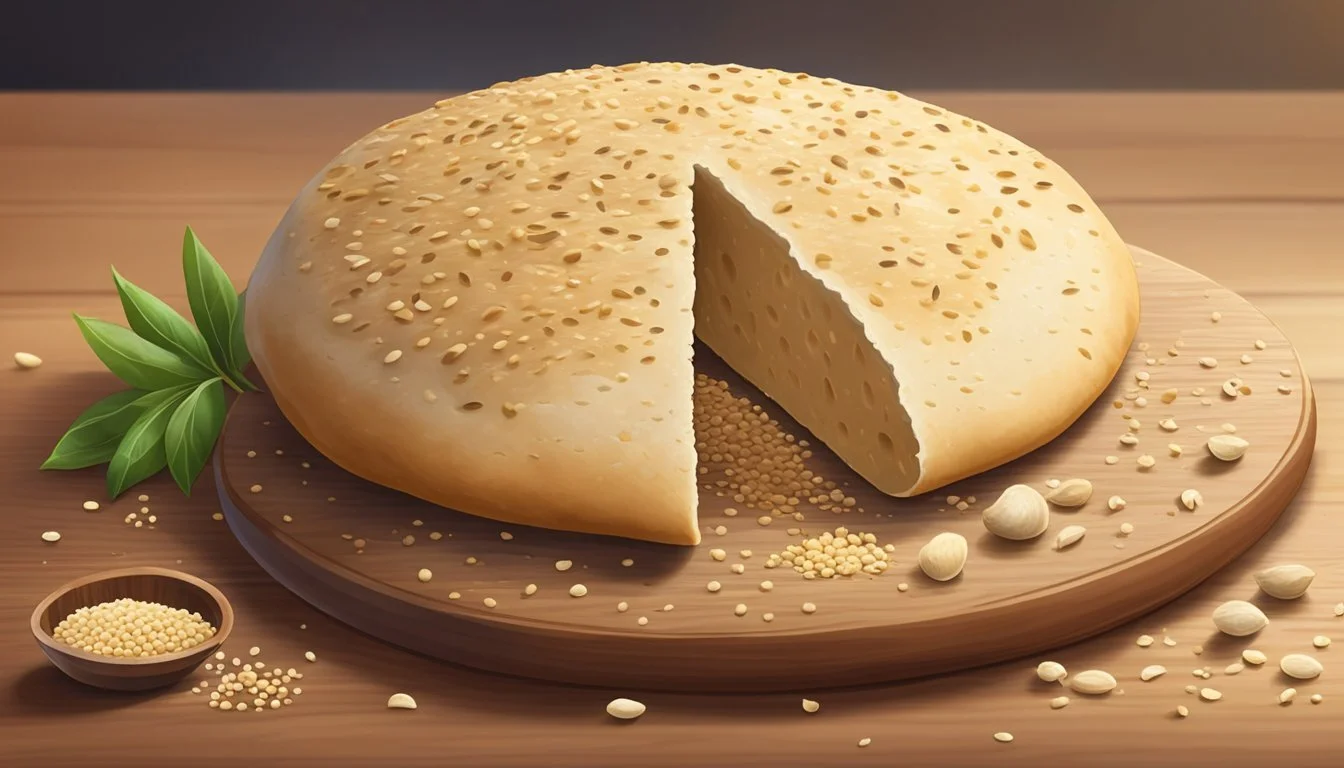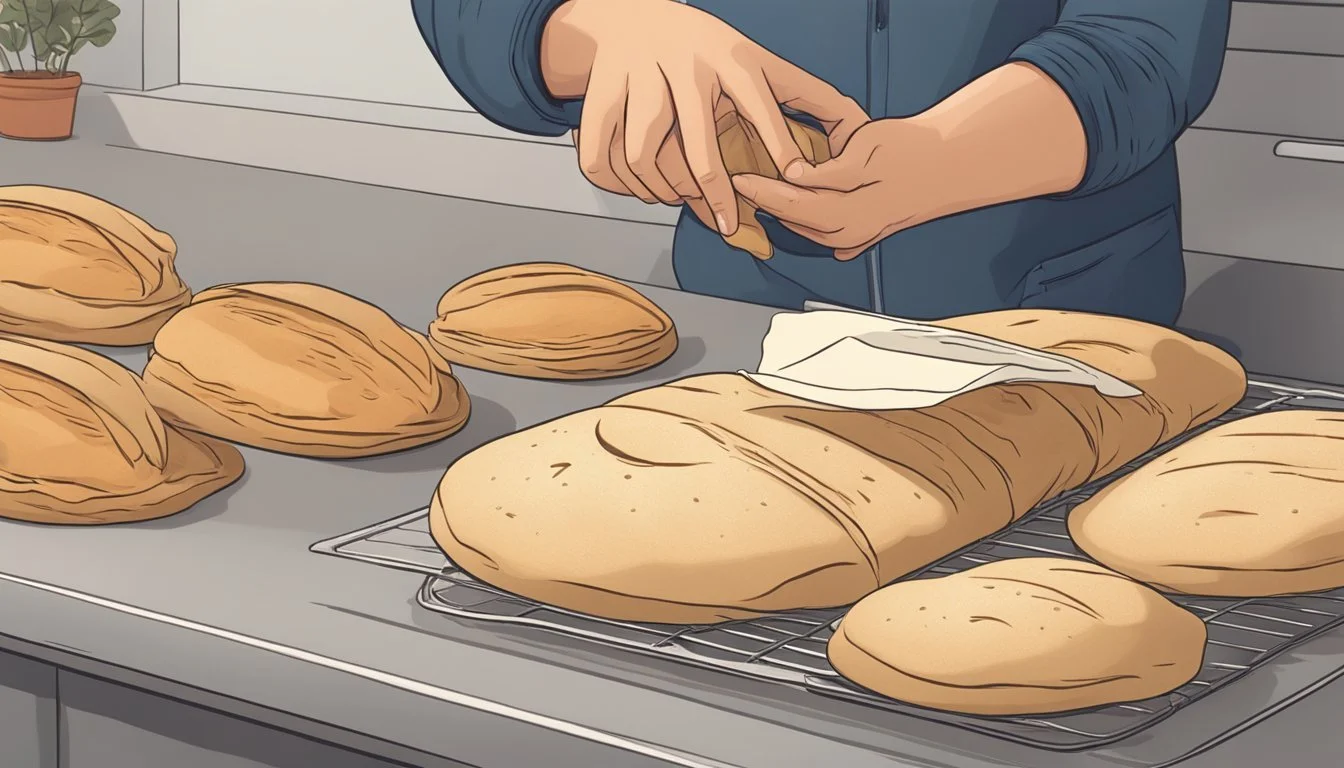Does Pita Bread Go Bad?
Understanding Shelf Life and Storage
Pita bread, a staple in many kitchens, is known for its versatility and delicious taste. Yes, pita bread does go bad, like any other type of bread. Typically, store-bought pita bread can last for about a week at room temperature if kept in a sealed container.
Homemade pita bread usually has a shorter shelf life. On the kitchen counter, it typically remains fresh for 2-3 days. For those looking to extend its shelf life, refrigerating pita bread can help preserve it for up to a week without significant loss in quality.
Proper storage can significantly influence the shelf life of pita bread. Using airtight containers or vacuum-sealable bags can keep pita bread fresh for up to two weeks in the refrigerator. This simple practice prevents staleness and maintains the bread's soft texture, making it easier to enjoy for a longer period.
Understanding Pita Bread
Pita bread is a popular flatbread known for its versatility and health benefits. It comes in various types, including whole wheat and store-bought options, each with its own unique qualities.
Definition and Origin
Pita bread is a soft, slightly leavened flatbread that originates from the Middle East. It is characterized by its round shape and pocket, which forms during baking. This pocket makes it ideal for stuffing with various fillings like salads, meats, and falafel.
Historically, pita has been a staple in Middle Eastern cuisine for thousands of years. Its simplicity and adaptability have made it popular worldwide. Ancient Egyptians are believed to have been among the first to bake this type of bread.
Ingredients and Types
The basic ingredients for pita bread include wheat flour, yeast, salt, olive oil, and a small amount of sugar. These simple ingredients contribute to its soft texture and slight chewiness.
Pita can be made with white or whole wheat flour. Whole wheat pita is higher in fiber and nutrients compared to its white flour counterpart. Additionally, pita bread can be homemade or store-bought. Homemade pita bread often has a shorter shelf life due to the absence of preservatives, but it provides a fresher taste.
Store-bought pita is convenient and has a longer shelf life, usually due to added preservatives. Some varieties of store-bought pita may also be fortified with additional vitamins and minerals for enhanced nutritional value.
Different types of pita include those specifically designed to have pockets and those without, often referred to as pocketless pita. Pocket pita is especially useful for sandwiches, while pocketless pita serves well as a wrap or dip accompaniment.
Assessing Freshness and Quality
Freshness and quality of pita bread are crucial for maintaining its palatability and safety. Indicators like texture, flavor, and the presence of mold help in determining if the bread is still good to consume.
Signs of Stale Pita Bread
Stale pita bread often has a dry and hard texture. It becomes less pliable and may crack easily when bent.
The appearance may remain unchanged, but the bread’s crumb structure feels more rigid. This change is more pronounced if the bread has been left exposed to air.
Additionally, stale pita bread can take on an off flavor. It might lack the subtle, fresh taste it originally had. Paying attention to these sensory changes can help in identifying when pita bread is past its prime.
Recognizing Mold Growth
Mold growth on pita bread is a clear sign it should be discarded. Common molds appear as spots of discoloration, often in shades of green, blue, black, or white.
Inspect both surfaces of the pita bread. Mold thrives in moist environments, so even small patches signify contamination. Moreover, the presence of mold usually accompanies an unpleasant odor. This odor indicates spoilage even before visible signs emerge.
Avoiding consumption of moldy bread is essential, as some molds produce toxins that are harmful if ingested.
Texture and Flavor Changes
Fresh pita bread has a soft, slightly chewy texture with a pliable feel. Over time, exposure to air causes it to dry out, becoming more brittle.
Texture changes are a primary indicator of aging bread. In addition, the flavor of pita bread evolves as it ages. Fresh pita has a mild, subtly sweet taste. Stale bread loses this freshness and can develop an off flavor.
Checking for these changes in texture and taste is important to ensure the bread is still enjoyable and safe to consume.
Optimal Storage Conditions
Proper storage of pita bread can significantly extend its shelf life and maintain its freshness. Factors such as temperature, packaging, and moisture control play essential roles.
At Room Temperature
Pita bread can be stored at room temperature for short-term use. Keep it in a cool, dry place, such as a pantry or countertop. To avoid moisture build-up, which can lead to mold, use plastic wrap or aluminum foil if the original packaging is not resealable. Ensure the storage area has adequate airflow. Pita bread typically lasts 3-5 days at room temperature but it's best used sooner for maximum freshness.
Refrigeration Best Practices
Refrigeration can extend the shelf life of pita bread up to 2-3 weeks. Store it in an airtight container or use ziplock bags to prevent it from drying out. You can also wrap the bread in parchment or wax paper before placing it in a sealed bag. Ensure the refrigerator is set to maintain a consistent temperature, as fluctuating cold can affect bread quality.
Freezing for Longevity
For longer preservation, freezing pita bread is highly effective. Wrap each piece individually in plastic wrap to prevent freezer burn. Place the wrapped pieces in a freezer bag or vacuum-sealed bag for best results. Properly stored pita bread can last up to 6 months in the freezer. To use, thaw at room temperature or warm in an oven for a few minutes.
Health and Safety Considerations
Properly understanding the health and safety aspects of pita bread can help avoid potential issues like mold growth, food poisoning, or allergens.
Risks of Spoiled Pita Bread
Spoiled pita bread poses significant health risks. Mold can grow on pita bread if not stored properly. Mold growth is typically visible and can lead to respiratory problems and allergic reactions if ingested.
Food poisoning is another risk associated with spoiled pita bread. Consuming bread past its expiration date or when it shows signs of spoilage can result in gastrointestinal issues.
To prevent spoilage, store pita bread in a sealed package and in a cool, dry place. Refrigeration can extend its shelf life, although it may affect the texture.
Allergens and Dietary Restrictions
Pita bread is primarily made from wheat flour, which contains gluten. Individuals with gluten intolerance or celiac disease should avoid traditional pita.
Yeast is another ingredient that could pose an issue for those sensitive to it. While pita bread is low in fat and calories, it often contains preservatives to extend shelf life, which might not suit all dietary preferences.
For those with wheat allergies, gluten-free pita options are available, typically using alternative flours like rice or almond flour to cater to dietary restrictions.
Utilization and Revival Strategies
To make the most of older pita bread, it’s essential to use effective methods for refreshing stale pitas and finding creative ways to utilize them if they’ve gone past their prime.
Refreshing Stale Pita Bread
Stale pita can regain its softness with proper reheating techniques. One effective method is to wrap the pita in a damp paper towel and microwave it for 20-30 seconds. This method introduces moisture and heat, essential for softening the bread.
Another approach involves using a skillet. Sprinkle the pita with a bit of water and heat it over medium heat until it's soft and warm. This process works well for quick reheating and can add a slight crispiness to the exterior.
For more thorough warming, wrap the pita in aluminum foil and place it in a preheated 350°F oven for about 10 minutes. This method helps the bread regain its softness uniformly without becoming too moist or too crispy.
Creative Uses for Pita Past Its Prime
Even if pita bread has gone stale or past its prime, it can still be utilized in various recipes. By transforming the bread into breadcrumbs or croutons, it can add texture and flavor to other dishes. Toasting the bread and then grinding it makes excellent breadcrumbs for coatings or toppings.
Stale pita can also be used in making bread puddings. The bread absorbs the custard mixture well, creating a delicious and moist dessert. Simply cut the pita into pieces, mix with a custard base, and bake until set.
Another creative use includes turning stale pita into pita chips. Cut the bread into wedges, brush with olive oil and seasonings, and bake until crispy. These chips make a great snack or accompaniment to dips like hummus.
By employing these tactics, stale pita bread can still be a valuable component in your meals, ensuring minimal waste and maximum taste.
Culinary Applications of Pita Bread
Pita bread's versatility is evident in its various culinary uses, from convenient sandwiches to perfect pairings for dips. This bread's unique pocket and texture make it a staple in many cuisines around the world.
Sandwiches and Fillings
Pita bread is often used to create sandwiches by stuffing its pocket with a variety of fillings. Popular options include grilled chicken, falafel, and gyro meat.
Toppings such as lettuce, tomatoes, cucumbers, and tahini sauce add freshness and flavor.
For a protein-packed sandwich, combining grilled chicken with hummus and cheese provides a satisfying meal. Using whole wheat pita can increase the nutritional value by adding more fiber and nutrients.
Dips and Accompaniments
Pita bread serves as an excellent accompaniment for various dips. Hummus, a blend of chickpeas, olive oil, and tahini, pairs perfectly with the soft interior and slightly crispy exterior of pita bread.
Other popular dips include baba ganoush and tzatziki.
Pita can be toasted or cut into wedges for a crunchy texture that enhances the dipping experience. For those looking for a healthier alternative, using whole wheat pita can reduce refined sugar and increase fiber intake.
Pita in International Cuisine
Pita bread is a staple in Middle Eastern and Mediterranean cuisines. In Greek cuisine, it is often enjoyed with dishes like souvlaki and tzatziki.
In Middle Eastern cuisine, it accompanies dishes such as shawarma and kebabs.
Additionally, pita can be found in Indian and North African dishes, showcasing its global appeal. The bread’s ability to hold various fillings and its subtle flavor make it a favorite in many international recipes.
Whether served as a side or used as the main vessel for food, pita bread's culinary applications are numerous and celebrated worldwide.
Tips for Buying and Baking
Purchasing and baking pita bread both require careful consideration to ensure the best quality and flavor. Key aspects include selecting top-notch ingredients and following best practices while baking.
Selecting High-Quality Pita
When buying store-bought pita bread, check the ingredient list. Opt for brands with minimal preservatives and simple ingredients like flour, water, yeast, and salt. Examine the bread for any visible mold or sporadic spots, which can indicate spoilage.
Freshness indicators include a soft texture and a pleasant smell. Avoid packages with excessive condensation or air inside, as these might reduce the bread's shelf life.
Homemade Pita Baking Tips
For those baking at home, choose high-quality flour for the best results. Mix flour, water, yeast, and salt to form a smooth dough. Allow the dough to rise until it doubles in size.
A hot oven is crucial. Preheat an oven with a baking stone or steel to achieve even heat distribution. Bake the rolled-out dough at 475°F (245°C) for a quick puff.
Ensure the dough is rolled thin to create the characteristic pocket. The dough should be moist but not sticky; adjust water or flour amounts as needed.
For added flavor, consider using a sourdough starter, which can lend a tangy note to the pita bread.
Freezing and Thawing Methods
Proper freezing and thawing methods are essential to extend the shelf life of pita bread while maintaining its quality. This section covers how to freeze pita bread to avoid freezer burn and how to thaw it effectively without compromising texture.
Best Practices for Freezing Pita Bread
To freeze pita bread effectively, begin by selecting fresh pita. Freshness ensures that the bread retains its quality over time in the freezer. If pita bread is older, freezing will only slow down the staling process, not reverse it.
Wrapping Options: Use aluminum foil, waxed paper, or freezer bags. Double-wrap the pita to prevent moisture loss and freezer burn. An airtight container can also be used for additional protection.
Packaging: Separate layers of pita with waxed paper or parchment paper if you are stacking multiple pieces. This prevents them from freezing together.
Labeling: Clearly label the wrapped pita with the date. This keeps track of how long the bread has been frozen, as the quality may decline after a few months.
Thawing Instructions
When thawing frozen pita bread, it is best to leave it in its packaging to prevent moisture loss. Thaw it on the countertop or in the refrigerator. The countertop method takes a few hours, while the refrigerator method can take overnight.
Warming Tips: To freshen up the thawed pita, use an oven preheated to 350°F (175°C) for 5-10 minutes. This restores a bit of the original texture and warmth.
Microwave Option: For a quicker option, place the pita on a microwave-safe plate and cover with a damp paper towel. Heat for about 10-20 seconds.
Avoid thawing pita bread using high heat or for extended periods, as this can lead to uneven thawing and a tough texture. Proper thawing ensures the pita remains soft and ready for use.







